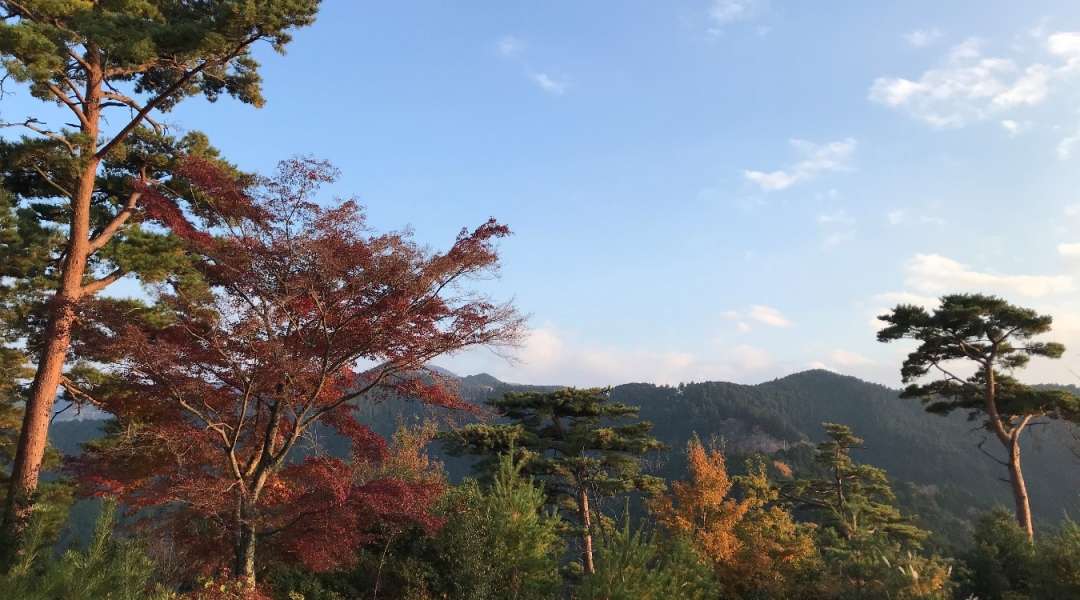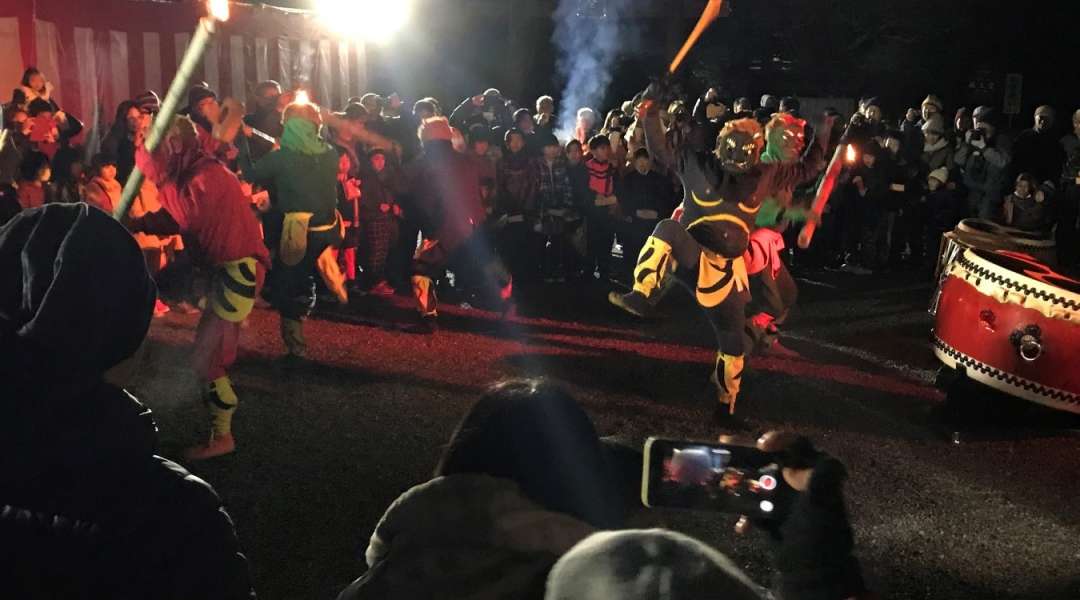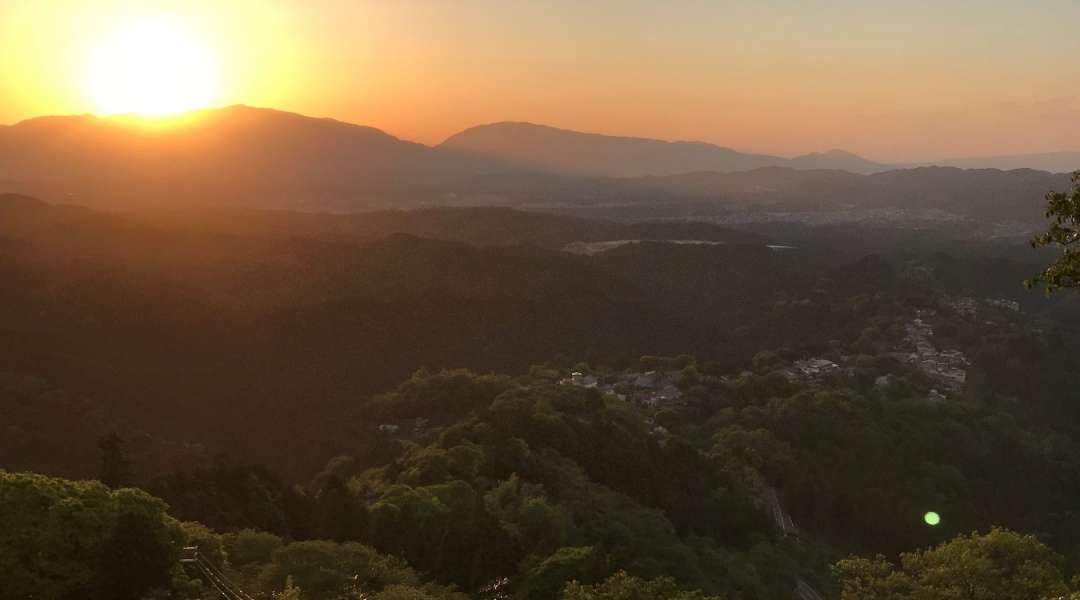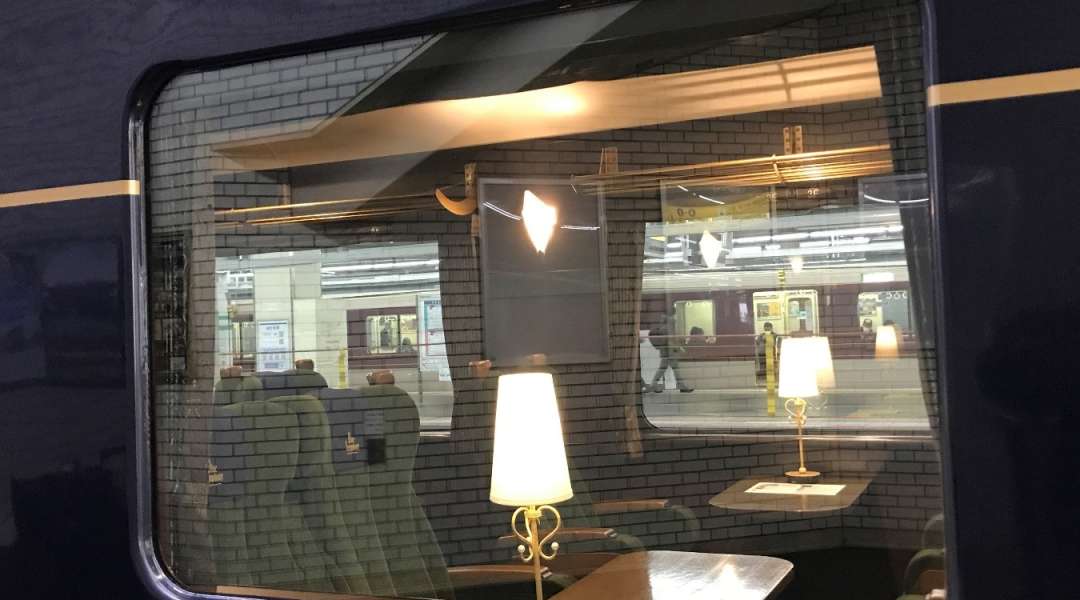 Yoshino Village in summer, surrounded by cedar forests. ©Alena Eckelmann
Yoshino Village in summer, surrounded by cedar forests. ©Alena Eckelmann
As well known as Nara is, Japan's ancient heartland can often be confusing for people passing through from Kyoto and Osaka, not least because Nara is not just a city, but a whole prefecture! The truth is that there's a whole lot more to explore in Nara than meets the eye, and Mount Yoshino, around an hour or so south of the city, is a clear hidden gem for people who want to know what there is to do in the area beyond Todaiji Temple and the deer park. But when to go? Well, the answer is anytime, as the region comes alive with colour with each passing season. Let's check them out one by one.
Flowers, Foliage and Festivals throughout the Year
Starting off with the most popular period, in spring (late March to mid/late April) the forest around the mountain village of Yoshino is covered in shades of pink from the sakura (cherry blossoms). This is the main season when visitors come here and, actually, the locals joke about this saying that Yoshino has only one real season, namely sakura!
This is also roughly the same season for mountain azalea (early April to early May) and the new leaves on trees (early April to early May), followed by the hydrangea season from June to early July.
Moving into summer, many visitors choose not to come up Mount Yoshino (or 'Yoshinoyama'), but stay in the valley where Yoshino River is running. Since Yoshinoyama is located in the middle of forest, it is green all around. In addition to the cherry trees there are many cedar plantation forests and the “Yoshino Cedar” is famous throughout the whole of Japan.
On July 7, at Tanabata, an interesting celebration takes place at Zao-do Hall of Kimpusen-ji Temple. It is called “Frog Jump”, or Kaerutobi and it relates to Yoshinoyama’s Shugendo tradition.

Followers of Shugendo have lined up in front of the Zao-do Hall to conduct a goma fire ritual. ©Alena Eckelmann
You will hear the sound of the hora conch shell throughout the summer, too, which is the training season for the Yamabushi, the followers of Shugendo. Between early May and late September is the time when they do annual pilgrimages to Ominesan-ji Temple.
At this time of the year visitors to Yoshino are likely to see groups of Yamabushi, the followers of Shugendo, and sometimes they can observe a goma fire ritual conducted by these Yamabushi.

The Kane-no-torii Gate is the first of four gates that the Yamabushi pass through on their way to Ominesan-ji Temple, the main sanctuary of Shugendo. Each gate has a meaning. This is the gate of “spiritual awakening”. ©Alena Eckelmann

Small wayside shrine looks mysteriously transformed by the last rays of sunlight in late autumn. ©Alena Eckelmann

At Takakiyama viewing platform looking towards the Omine mountains. ©Alena Eckelmann
Autumn colors in Yoshino appear from late October to late November as the leaves of the cherry trees also change color. They are not as colorful as the leaves of maple trees but still a beautiful sight. Autumn is a great season to come to Yoshino as there are no crowds like in April and plenty of colorful leaves to enjoy.
The best autumn leaves spots in Yoshino are on the hill leading up to the village from Yoshino Station, around Yoshimizu-jinja Shrine but you can also spot them around the Takakiyama viewing platform, former site of a fortification, and the area around Saigyo-an, the location of poet-monk Saigyo’s hermitage near the Kokeshimizu Spring in the Oku-Senbon area of Yoshino.

The “demons’ dance wildly in front of the Zao-do Hall of Kimpusen-ji Temple during Setsubun. ©Alena Eckelmann
In winter, between December and early March, it is very quiet on Mount Yoshino and there are not many activities. While the temples and shrines are open, many of the cafes, restaurants and shops along the main village road might be open on weekends only.
A highlight is the Setsubun celebrations on February 3, which are quite particularly interesting here. The festival is called Onibi, or “Oni Festa” and it involves locals dressed up as demons (oni in Japanese) roaming around in the streets of Yoshino. This is great fun for all generations!
While it is quite cold, it is not always snowing here. If you happen to come on a snowy day and you walk towards Kimpu-jinja Shrine, you will be able to enjoy Yoshino’s tranquil winter scenery.
A couple of interesting events still undiscovered by the foreign community have been taking place in Yoshino since recent years: one is the Omine Hillclimb cycling event takes place in October and the other is the Kobo Trail trail-running event in May.
Whether you're a cyclist, a hiker, a fledgling monk or a passer-by looking to enjoy the festivities, a trip to Yoshinoyama never fails to impress, no matter the season,

Snowfall during the night blankets the mountains behind Nyoirin-ji Temple. ©Alena Eckelmann

At the tori entrance of Kimpu-jinja Shrine with nobody else around. This is the second important gate for followers of Shugendo, the gate of “training”, and the shrine is the last building on the upper end of Yoshino. From here on one enters the mountains for good. ©Alena Eckelmann

A sunset view from Kimpu-jinja Shrine over Yoshino and the Katsuragi Mountain range in the distance. En no Gyoja is said to have demanded some deities to build a bridge between Yoshino and Katsuragi. ©Alena Eckelmann
Even more reasons to visit
If you are not convinced yet, here are some more reasons for why should put Yoshino on the list of places to visit in Japan, regardless of the season:
1) Yoshino is part of the Yoshino-Kumano National Park that was established as early as 1936 and it is one of the “Most Beautiful Villages in Japan”.
2) Together with the Buddhist sanctuary of Koyasan and the Kumano Sanzan, the Three Kumano Grand Shrines, and Kumano Kodo pilgrimage trails in Wakayama Prefecture, Yoshino was designated as part of the UNESCO World Heritage Site “Sacred Sites and Pilgrimage Routes in the Kii Mountain Range” in 2004.
3) It's also easy to get to! Access to Yoshino is just one train ride away from Osaka. Take a Kintetsu Limited Express train from Osaka’s Abenobashi Station and ride through to the Yoshino Station terminal. The slower and cheaper option is an Express Train and the upscale option is the “Blue Symphony”, a special sightseeing train.
 The Blue Symphony is waiting for departure Yoshino-bound at Osaka’s Abenobashi Station. ©Alena Eckelmann
The Blue Symphony is waiting for departure Yoshino-bound at Osaka’s Abenobashi Station. ©Alena Eckelmann
Want to learn more about Mount Yoshino and it's importance within Nara? Head over to our overview of spirituality and cherry blossom mania within the region.
And for more Japan-facts and updates follow us on Facebook, Instagram, and Twitter!

















































